Blog Posts Tagged CFD Module
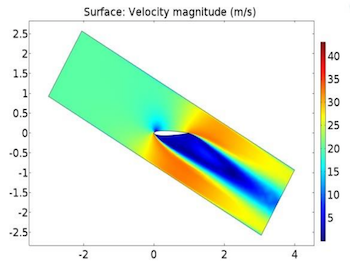
Improving Vertical-Axis Wind Turbine Efficiency with CFD Simulation
Vertical-axis wind turbines are easier to install and maintain than horizontal-axis devices, but they also have low peak efficiencies and struggle with starting torque. Enter CFD simulation.
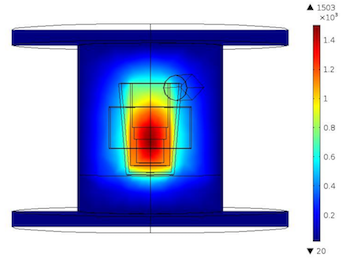
Optimizing Microwave Furnaces for Solar-Grade Silicon Production
For silicon to be considered “solar grade”, it has to be 99.9999% pure. Therefore, microwave furnaces used to produce solar-grade silicon need to be optimized for quality and efficient output.

Benchmark Model Shows Reliable Results for Inertial Focusing Analysis
Inertial focusing involves the migration of particles through a channel. This benchmark model analyzes particle behavior in an inertial focusing process with validated, reliable results.
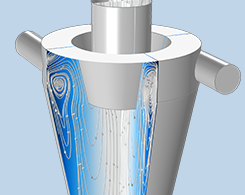
How to Use the v2-f Turbulence Model in the CFD Module
The v2-f turbulence model is an effective option for simulating highly nonlinear turbulent flow problems with both the accuracy and robustness of other, more limiting methods.
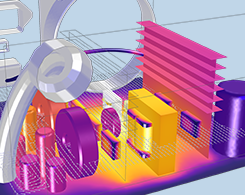
Modeling Natural and Forced Convection in COMSOL Multiphysics®
Get an overview of several approaches for modeling natural and forced convection in COMSOL Multiphysics®, starting with the simplest method and adding complexity from there.
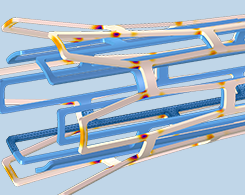
Finding an Accurate Model to Study Blood Flow Around a Stent
Biomedical example involving CFD simulation: In order to analyze the blood flow around an arterial stent, you need a fluid model that can describe blood’s non-Newtonian behavior.

Exploring the Effect of Greenery on Urban Air Pollution via Simulation
Can planting greenery in cities actually reduce air pollution? Researchers used CFD simulation to investigate how greenery affected the air quality of urban environments.
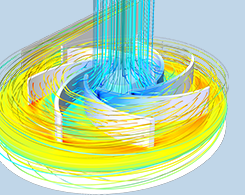
Predict the Performance of Rotating Cone Micropumps with Simulation
Researchers from Texas A&M University used multiphysics simulation to evaluate the fluid dynamics and performance of a rotating cone micropump, a key component in many types of process equipment.

Analyzing Novel Roof Tile Designs with Multiphysics Simulation
To investigate a novel design for roof tiles that can keep buildings cool in hot climates, called Life HEROTILE Project, a research group from Italy turned to multiphysics simulation.

Preventing Bubble Entrapment in Microfluidic Devices Using Simulation
Microfluidic devices are no match for bubbles. In fact, if bubbles become trapped in a microfluidic device, it could malfunction. Veryst Engineering created a CFD model to study this process.
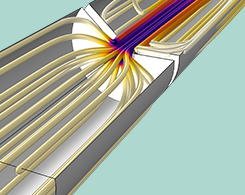
Fat-Washing Cocktails on an Industrial Scale
Bacon-flavored vodka? Pecan-infused bourbon? The fat-washing process extracts the flavors from fat and dissolves it into alcohol, and it can even be scaled up to an industrial level.
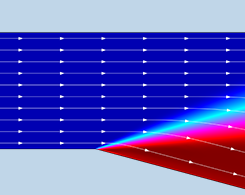
Ensure Accurate Expansion Fan Results with a Benchmark Model
When a supersonic flow turns around a convex corner, it causes an expansion fan. You can analyze this phenomenon in COMSOL Multiphysics® with a validated benchmark.

Keynote Video: Solving 2 Transport Process Problems with Simulation
In a keynote presentation from the COMSOL Conference 2016 Boston, Carl Meinhart from the University of California, Santa Barbara and Numerical Design discusses simulating transport processes.
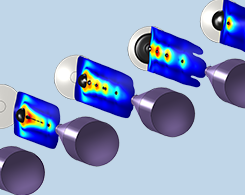
Designing Inkjet Printheads for Precise Material Deposition
The design of an inkjet printhead nozzle is important in order for the device to have precise material deposition, whether it is used in a 2D or 3D printer.

Keynote Video: Combining First Principles Thinking and Modeling
Bernard McGarvey of Eli Lilly and Company discusses the combination of first principles thinking and modeling at the COMSOL Conference 2016 Boston.
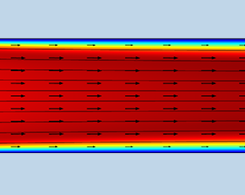
How to Assign Fluid Pressure in CFD Simulations
What is the difference between relative and absolute pressure? Why does COMSOL Multiphysics® use relative pressure to solve CFD problems? Get answers here…
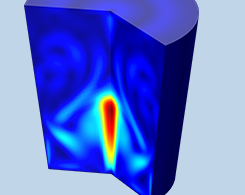
Introduction to Modeling Natural Convection in COMSOL Multiphysics®
Electronics cooling, indoor climate systems, and environmental transport problems all rely on natural convection. Get an introduction to modeling this phenomenon in COMSOL Multiphysics®.
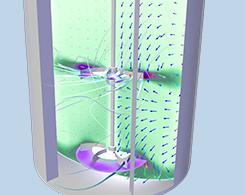
Analyze a Mixer’s Design Elements with COMSOL Multiphysics®
Industrial mixers are used in the production of food, pharmaceuticals, and plastic. You can design a mixer geometry to fit your specific use case with simulation…
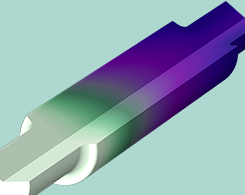
New Reacting Flow Multiphysics Interface Delivers Greater Flexibility
Get an introduction to the Reacting Flow interface, which can be used to simulate fluid flow and reactions in gases and liquids in COMSOL Multiphysics®.
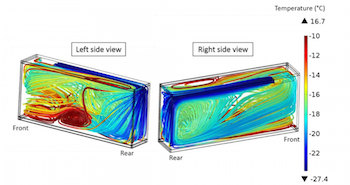
Using Simulation to Ensure the Cooling Efficiency of Refrigerated Trucks
To transport food, vaccines, and other perishables, refrigerated trucks are designed to maintain a cold temperature. Using simulation, researchers analyzed the cooling efficiency of such trucks.
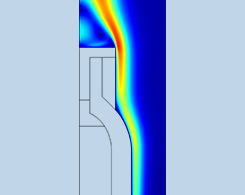
Compressibility Options and Buoyancy Forces for Flow Simulations
Here, we cover the various formulations for fluid flow equations in COMSOL Multiphysics® and when it’s best to use each option.
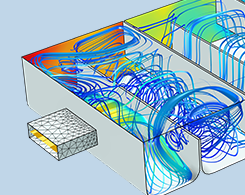
Building More Effective Water Treatment Basins with Apps
Fluid flow simulation is an efficient way to optimize the design of water treatment basins to ensure their overall effectiveness. Apps expand these capabilities to a wider audience.
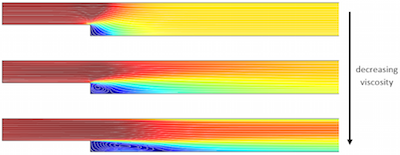
Viscosity Ramping Improves the Convergence of CFD Models
Viscosity ramping can help decrease the computation time for your models by solving for higher viscosities and using the solutions as initial conditions for the problem at lower viscosities.
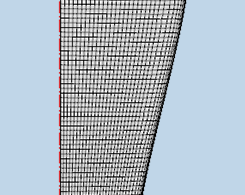
Model How the Bubbles in a Glass of Stout Beer Sink, Not Rise
Ever notice how the bubbles in certain kinds of stout beer sink to the bottom of the glass instead of rising to the top? We explain this phenomenon using fluid flow simulation.
